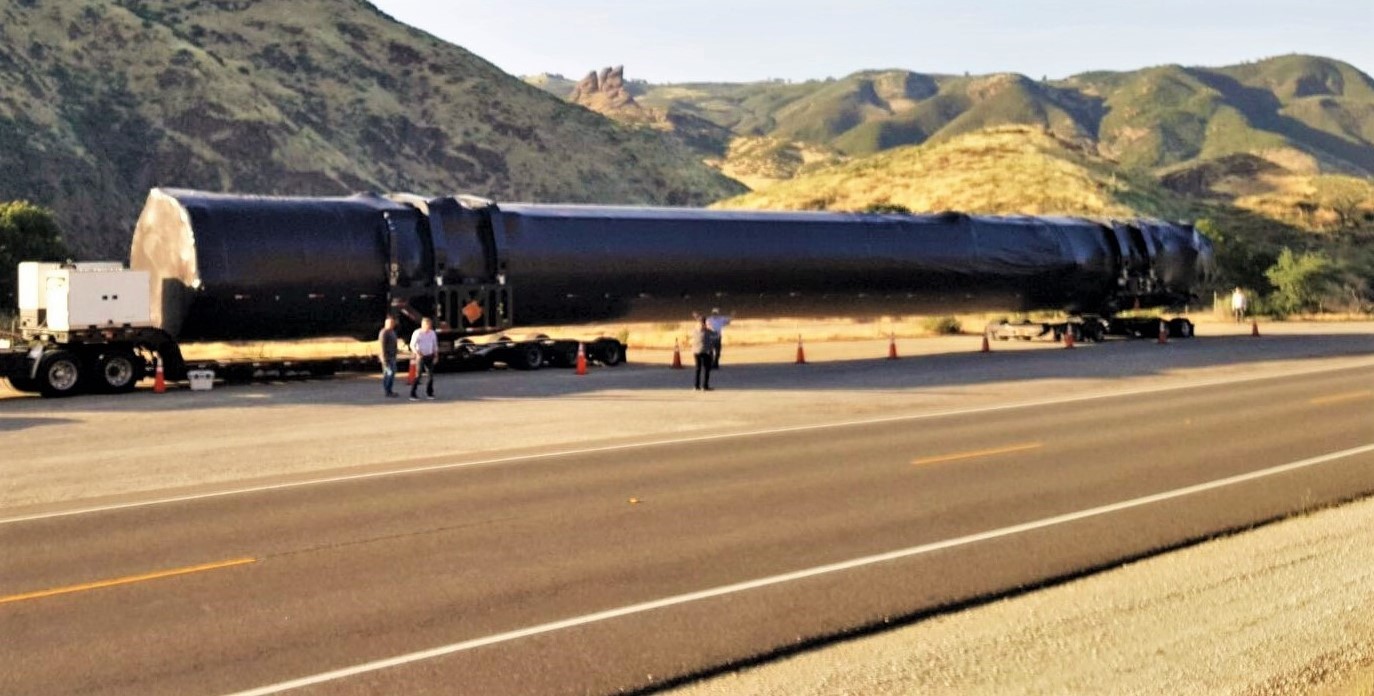
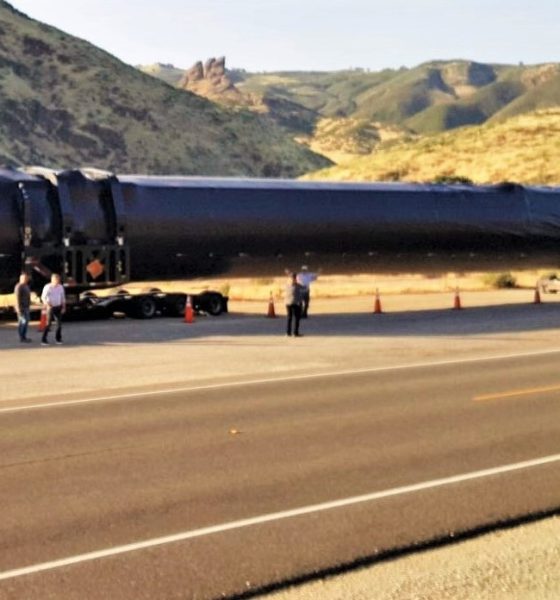
News
SpaceX Falcon 9 booster spotted in Southern California on journey to Florida
On August 20th, a member of a local California Facebook group happened to spot a SpaceX Falcon 9 booster in transit, an exceedingly rare sight as of late. Moving east, the booster is almost certainly heading to Florida to support a major cluster of 6-8 launches in Q4 2019.
This marks the first time in nearly four months that a flight-proven Falcon 9 booster has been spotted in transit, excluding a lone (unflown) booster captured on its way to McGregor, Texas last month. This also serves as an opportunity to reexamine the status of SpaceX’s expansive fleet of reusable Falcon 9 Block 5 rockets as the company prepares for a busy end of 2019 in the midst of a rare multi-month lull in launch activities.
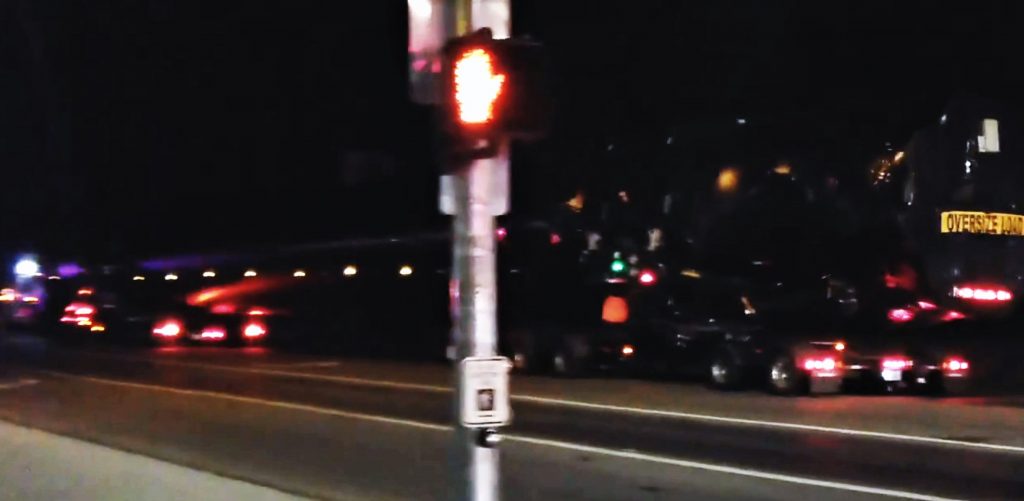
Based on the timing, its location (Southern California), and the direction it was headed (Eastbound), the rocket spotted on August 20th is almost certainly twice-flown Falcon 9 booster B1051. The booster was likely departing SpaceX’s Vandenberg Air Force Base (VAFB) launch facilities after some two months post-launch inspections and refurbishment, having completed its second launch and landing on June 12th, 2019 in support of the Radarsat Constellation Mission (RCM).
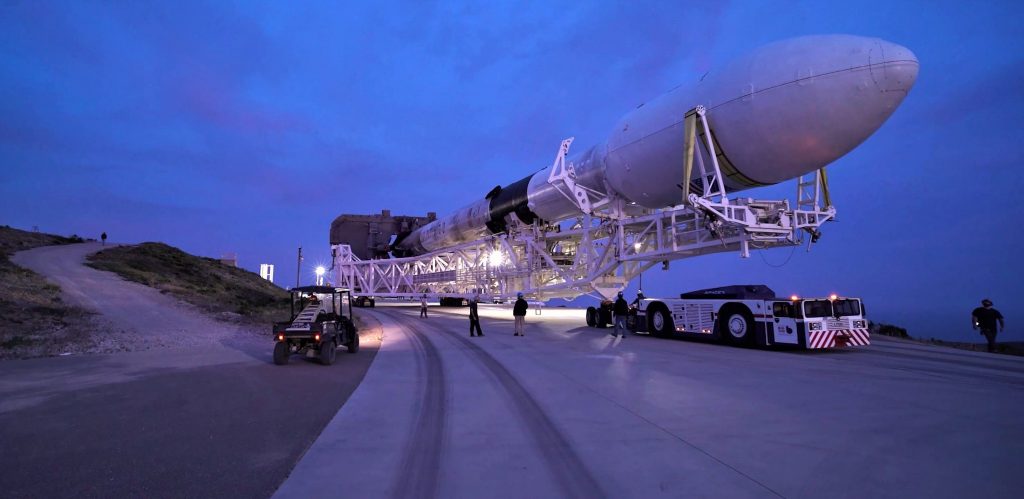
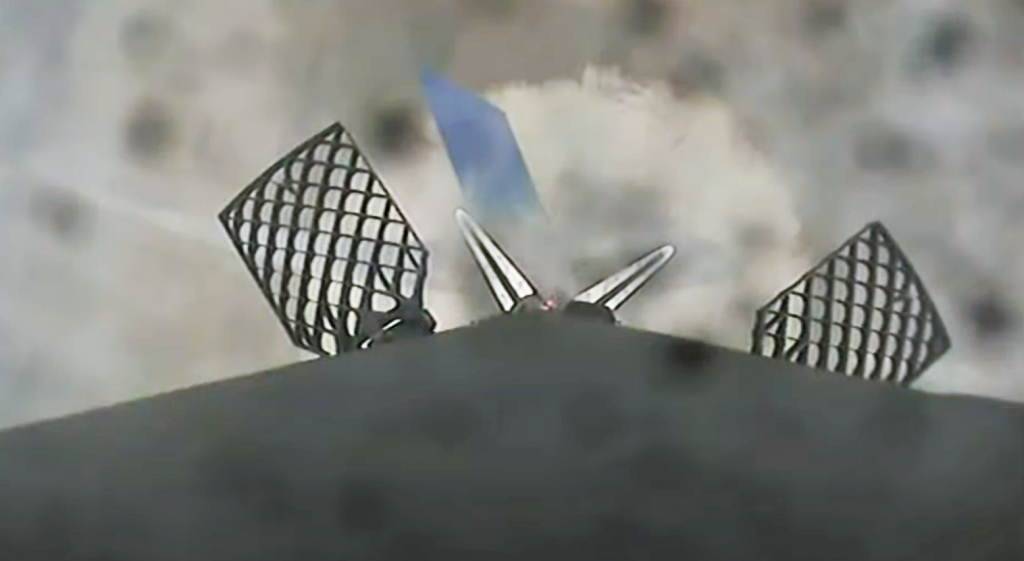
Prior to its successful launch of RCM, B1051 had the historic privilege of supporting the inaugural orbital launch of SpaceX’s Crew Dragon spacecraft, putting the next-gen crew capsule through its paces before a crewed launch debut expected to occur absolutely no earlier than (NET) December 2019. Known as DM-1 (Demo-1), B1051 was subjected to an exceptionally strenuous suite of inspections, analysis, and testing for the mission – from the very first welding sparks to the booster’s McGregor, TX and Florida static fires and launch debut.
Said debut occurred on March 2nd, 2019, after which B1051 landed at sea aboard drone ship Of Course I Still Love You (OCISLY).
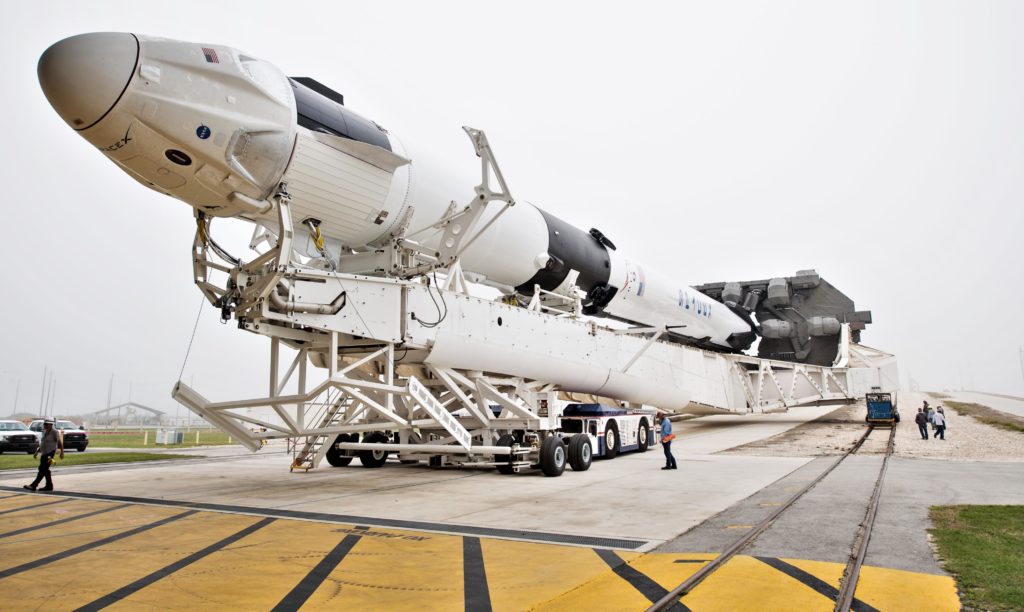
SpaceX production experienced an exceptionally frenetic period from early-2018 to mid-2019, in which the company averaged the completion of almost an entire Falcon 9 or Heavy rocket every 1-2 months, building, delivering, launching, and relaunching Falcon boosters B1046 through B1057 from ~January 2018 to April 2019. In the last 3-4 months, the (publicly visible) rate of rocket production has dramatically slowed, presumably an intentional slow-down triggered by SpaceX’s rapidly growing fleet of flight-proven boosters.
In the last four or so months, unaffiliated observers have spotted a grand total of one new Falcon 9 booster on its way from SpaceX’s Hawthorne, CA factory to its McGregor, TX testing facilities. That booster – likely either B1058 for Crew Dragon’s crewed launch debut (Demo-2) or B1059 for SpaceX’s next USAF GPS III launch – was spotted twice headed east in Arizona on July 29th. Prior to that, the next most recent ‘core spottings’ occurred in mid-to-late April, while the most recent since July 29th’s instance is B1051.2’s August 20th appearance. In short, things are unusually quiet on the SpaceX booster transport front.
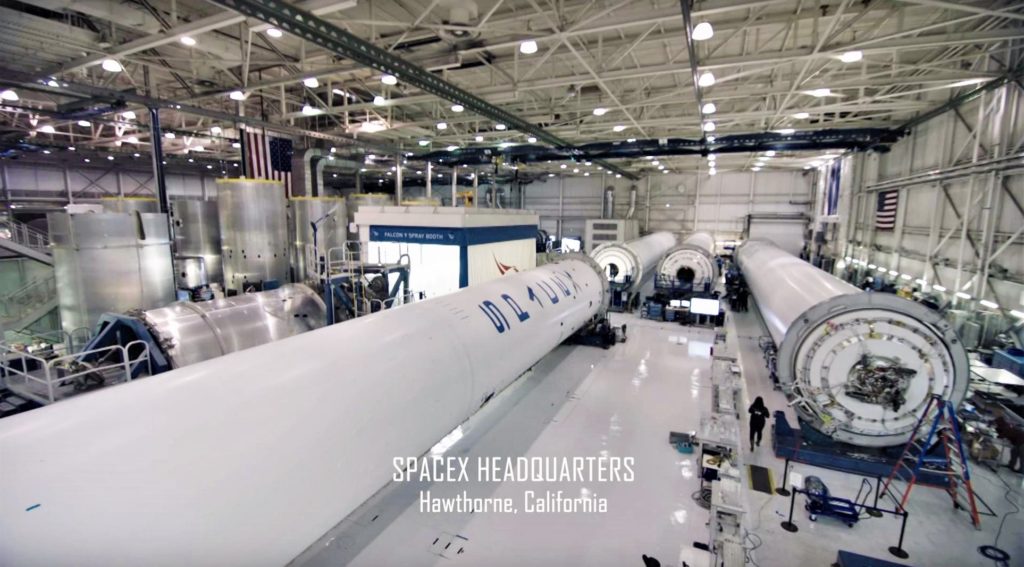
Rocket fleet logistics
This apparent slowdown in production can be relatively easily explained by the nature of SpaceX’s fleet of boosters, as well as the company’s growing confidence in the extreme reusability nominally permitted by Falcon 9’s Block 5 upgrade. Just a few days ago, SpaceX Vice President of Build and Flight Reliability Hans Koenigsmann reiterated the belief that Falcon 9 Block 5 boosters will be more than capable of safely performing 10 or more launches apiece.
At the moment, SpaceX’s fleet of flightworthy Block 5 boosters is seven strong, composed of B1046.3, B1048.3, B1049.3, B1051.2, B1052.2, B1053.2, B1056.2. Altogether, they have supported a full 17 launches in 15 months, averaging 2.4 launches apiece with a maximum of three launches achieved by three separate boosters. Under the extremely conservative assumption that 60-90 days are needed for post-flight inspections and refurbishment, anywhere from 2-6 of those boosters are already ready for their next launches.
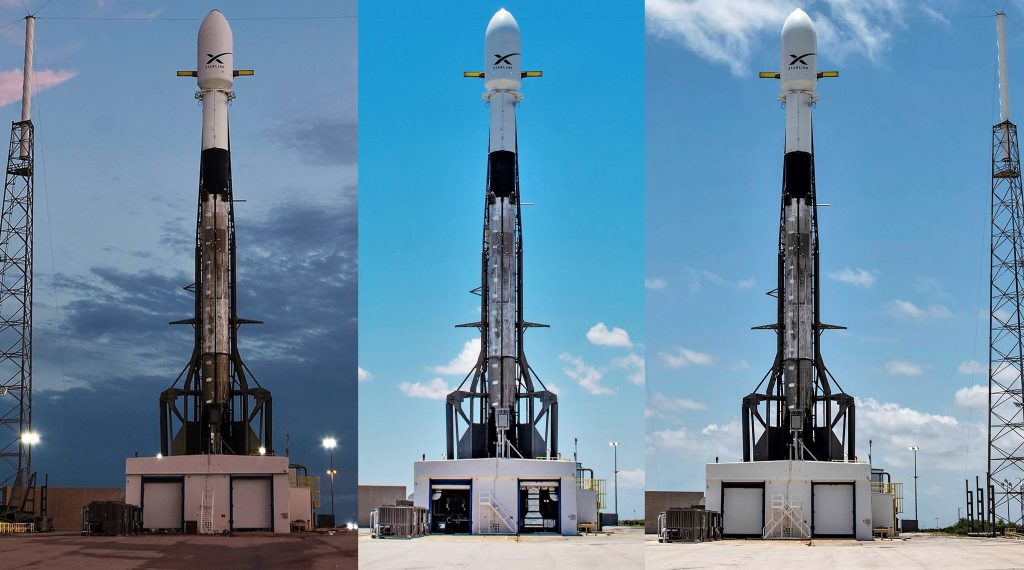
In simple terms, it appears that even a fleet as small as seven Falcon 9 Block 5 boosters may be capable of supporting a vast majority of SpaceX’s commercial launch contracts, while even NASA has come to support launching uncrewed Cargo Dragon missions on flight-proven boosters. In fact, Koenigsmann revealed that a number of customers had nearly come a full 180 degrees in the less than three years that SpaceX has been reflying boosters. Many now actively prefer a flight-proven booster and have come to view them as a more known quantity relative to unproven (i.e. new) hardware.
Aside from a handful of customers – primarily the US military – that explicitly demand new hardware, the rare need for entirely expendable Falcon 9 launches, and the equally rare loss of boosters during unsuccessful landings, SpaceX just doesn’t need nearly as high of a Falcon 9 or Heavy booster production rate to support the same (or even greater) launch cadences.
Check out Teslarati’s Marketplace! We offer Tesla accessories, including for the Tesla Cybertruck and Tesla Model 3.

Elon Musk
GM CEO Mary Barra says she told Biden to give Tesla and Musk EV credit
“He was crediting me, and I said, ‘Actually, I think a lot of that credit goes to Elon and Tesla…You know me, Andrew. I don’t want to take credit for things.”
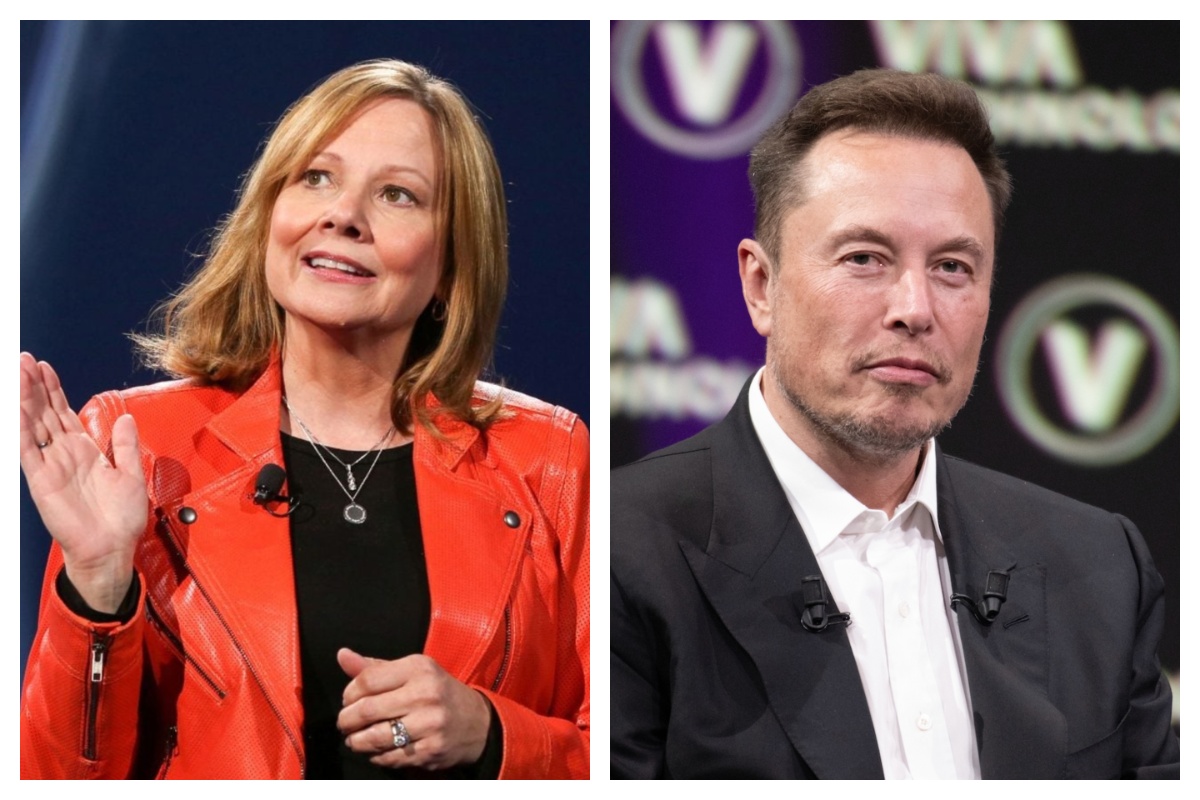
General Motors CEO Mary Barra said in a new interview on Wednesday that she told President Joe Biden to credit Tesla and its CEO, Elon Musk, for the widespread electric vehicle transition.
She said she told Biden this after the former President credited her and GM for leading EV efforts in the United States.
During an interview at the New York Times Dealbook Summit with Andrew Ross Sorkin, Barra said she told Biden that crediting her was essentially a mistake, and that Musk and Tesla should have been explicitly mentioned (via Business Insider):
“He was crediting me, and I said, ‘Actually, I think a lot of that credit goes to Elon and Tesla…You know me, Andrew. I don’t want to take credit for things.”
GM CEO Mary Barra said to Andrew Sorkin at the New York Times Dealbook Summit that she pulled President Biden aside and said Tesla CEO @elonmusk deserved the credit for EVs:
“He was crediting me, and I said, ‘Actually, I think a lot of that credit goes to Elon and Tesla,'” Barra… pic.twitter.com/OHBTG1QfbJ
— TESLARATI (@Teslarati) December 3, 2025
Back in 2021, President Biden visited GM’s “Factory Zero” plant in Detroit, which was the centerpiece of the company’s massive transition to EVs. The former President went on to discuss the EV industry, and claimed that GM and Barra were the true leaders who caused the change:
“In the auto industry, Detroit is leading the world in electric vehicles. You know how critical it is? Mary, I remember talking to you way back in January about the need for America to lead in electric vehicles. I can remember your dramatic announcement that by 2035, GM would be 100% electric. You changed the whole story, Mary. You did, Mary. You electrified the entire automotive industry. I’m serious. You led, and it matters.”
People were baffled by the President’s decision to highlight GM and Barra, and not Tesla and Musk, who truly started the transition to EVs. GM, Ford, and many other companies only followed in the footsteps of Tesla after it started to take market share from them.
Elon Musk and Tesla try to save legacy automakers from Déjà vu
Musk would eventually go on to talk about Biden’s words later on:
“They have so much power over the White House that they can exclude Tesla from an EV Summit. And, in case the first thing, in case that wasn’t enough, then you have President Biden with Mary Barra at a subsequent event, congratulating Mary for having led the EV revolution.”
In Q4 2021, which was shortly after Biden’s comments, Tesla delivered 300,000 EVs. GM delivered just 26.
News
Tesla Full Self-Driving shows confident navigation in heavy snow
So far, from what we’ve seen, snow has not been a huge issue for the most recent Full Self-Driving release. It seems to be acting confidently and handling even snow-covered roads with relative ease.

Tesla Full Self-Driving is getting its first taste of Winter weather for late 2025, as snow is starting to fall all across the United States.
The suite has been vastly improved after Tesla released v14 to many owners with capable hardware, and driving performance, along with overall behavior, has really been something to admire. This is by far the best version of FSD Tesla has ever released, and although there are a handful of regressions with each subsequent release, they are usually cleared up within a week or two.
Tesla is releasing a modified version of FSD v14 for Hardware 3 owners: here’s when
However, adverse weather conditions are something that Tesla will have to confront, as heavy rain, snow, and other interesting situations are bound to occur. In order for the vehicles to be fully autonomous, they will have to go through these scenarios safely and accurately.
One big issue I’ve had, especially in heavy rain, is that the camera vision might be obstructed, which will display messages that certain features’ performance might be degraded.
So far, from what we’ve seen, snow has not been a huge issue for the most recent Full Self-Driving release. It seems to be acting confidently and handling even snow-covered roads with relative ease:
FSD 14.1.4 snow storm Ontario Canada pic.twitter.com/jwK1dLYT0w
— Everything AI (@mrteslaspace) November 17, 2025
I found the steepest, unplowed hill in my area and tested the following:
• FSD 14.2.1 on summer tires
• FSD 14.2.1 on winter tires
• Manual drivingBut I think the most impressive part was how FSD went DOWN the hill. FSD in the snow is sublime $TSLA pic.twitter.com/YMcN7Br3PU
— Dillon Loomis (@DillonLoomis) December 2, 2025
Well.. I couldn’t let the boys have all the fun!
Threw the GoPro up and decided to FSD v14.2.1 in the snow. Roads were not compacted like the other day, a little slippery, but overall doable at lower speeds. Enjoy the video and holiday music 🎶
Liked:
Took turns super slow… pic.twitter.com/rIAIeh3Zu3— 🦋Diana🦋 (@99_Colorado) December 3, 2025
Moving into the winter months, it will be very interesting to see how FSD handles even more concerning conditions, especially with black ice, freezing rain and snow mix, and other things that happen during colder conditions.
We are excited to test it ourselves, but I am waiting for heavy snowfall to make it to Pennsylvania so I can truly push it to the limit.
News
Tesla hosts Rome Mayor for first Italian FSD Supervised road demo
The event marked the first time an Italian mayor tested the advanced driver-assistance system in person in Rome’s urban streets.
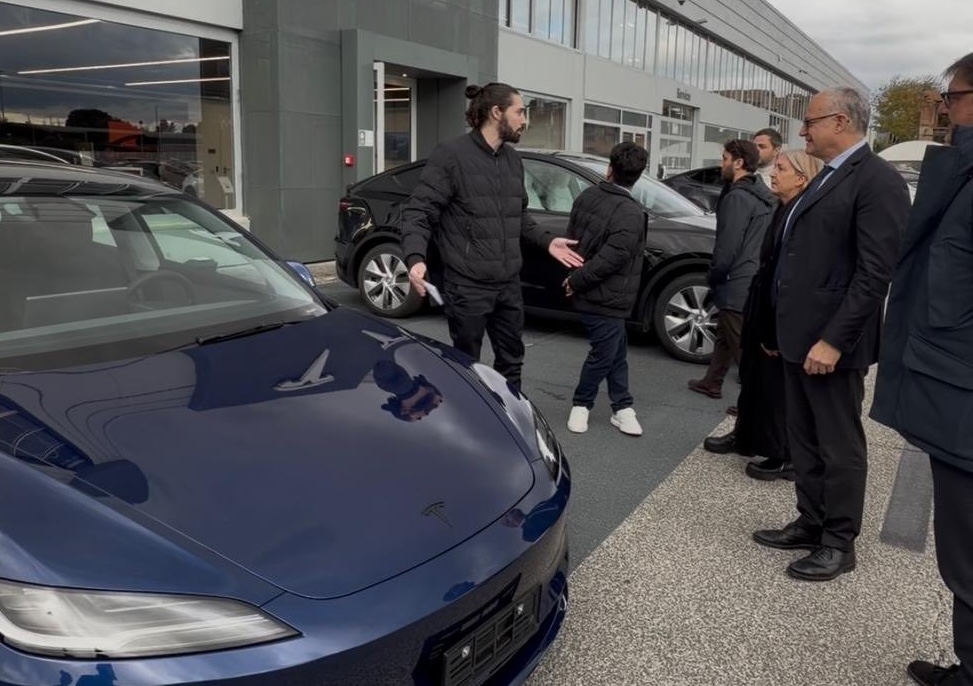
Tesla definitely seems to be actively engaging European officials on FSD’s capabilities, with the company hosting Rome Mayor Roberto Gualtieri and Mobility Assessor Eugenio Patanè for a hands-on road demonstration.
The event marked the first time an Italian mayor tested the advanced driver-assistance system in person in Rome’s urban streets. This comes amid Tesla’s push for FSD’s EU regulatory approvals in the coming year.
Rome officials experience FSD Supervised
Tesla conducted the demo using a Model 3 equipped with Full Self-Driving (Supervised), tackling typical Roman traffic including complex intersections, roundabouts, pedestrian crossings and mixed users like cars, bikes and scooters.
The system showcased AI-based assisted driving, prioritizing safety while maintaining flow. FSD also handled overtakes and lane decisions, though with constant driver supervision.
Investor Andrea Stroppa detailed the event on X, noting the system’s potential to reduce severe collision risks by up to seven times compared to traditional driving, based on Tesla’s data from billions of global fleet miles. The session highlighted FSD’s role as an assistance tool in its Supervised form, not a replacement, with the driver fully responsible at all times.
Path to European rollout
Tesla has logged over 1 million kilometers of testing across 17 European countries, including Italy, to refine FSD for local conditions. The fact that Rome officials personally tested FSD Supervised bodes well for the program’s approval, as it suggests that key individuals are closely watching Tesla’s efforts and innovations.
Assessor Patanè also highlighted the administration’s interest in technologies that boost road safety and urban travel quality, viewing them as aids for both private and public transport while respecting rules.
Replies on X urged involving Italy’s Transport Ministry to speed approvals, with one user noting, “Great idea to involve the mayor! It would be necessary to involve components of the Ministry of Transport and the government as soon as possible: it’s they who can accelerate the approval of FSD in Italy.”








